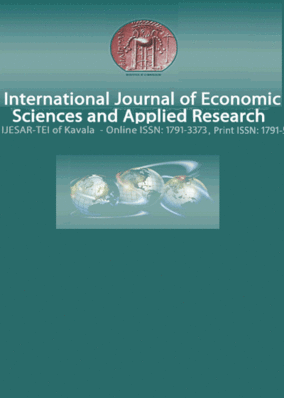Testing taxpayers' cognitive abilities : survey-based evidence
Part of : International journal of economic sciences and applied research ; Vol.5, No.1, 2012, pages 7-22
Issue:
Pages:
7-22
Abstract:
Our paper assesses the accuracy of individuals ' tax perceptions. Based on personal interviews, we aim to find out how tax complexity affects the capability of respondents to calculate income tax liability. Tax complexity is measured by interacting multiple tax rates, applied to one or more tax bases. Empirical results question the traditional view of taxpayers having a comprehensive understanding of taxation rules. Ourfindings support the view that increasing complexity affects the capability of taxpayers to accurately calculate income tax liability. For tax policy, there is also a need to determine how taxpayers erroneously deviate in terms of extent and direction, when facing increasing tax complexity. Our research design allows us to analyze extent and possible direction of the calculation bias. Approximating an empirical distribution of erroneous calculated effective tax rates could be helpful to design a more effective income tax system.
Subject (LC):
Keywords:
tax complexity, survey data, estimated tax rates
Notes:
Περιέχει πίνακες και βιβλιογραφία
References (1):
- Adams, J. S., 1965, ‘Inequity in social exchange’, Berkowitz, L. (Ed.), Advances inexperimental and social psychology, Academic Press, New York, pp. 267-299.Andreoni, J., Erard, B. and Feinstein, J. S., 1998, ‘Tax compliance’, Journal of EconomicLiterature, 36, 2, pp. 818-860.Atkinson, A. B. and Stiglitz, J. E., 1976, ‘The Design of Tax Structure: Direct versusIndirect Taxation’, Journal of Public Economics, 6, 1, pp. 55-75.Bartolome, C. de, 1995, ‘Which tax rate do people use: Average or marginal?’, Journal ofPublic Economics, 56, 1, pp. 79-96.Blaufus, K. and Ortlieb, R., 2009, ‘Is simple better? A Conjoint analysis of the effectsof tax complexity on employee preferences concerning company pension plans’ Schmalenbach Business Review, 61,1, pp. 60-83.Chetty, R., 2009, ‘Is the Taxable Income Elasticity Sufficient to Calculate Deadweight Loss? The Implications of Evasion and Avoidance, American Economic Journal: Economic Policy, 1, pp. 31-52.Congdon, W. J., Kling, J. R. and Mullainathan, S., 2009, ‘Behavioral Economics and TaxPolicy ’, National Tax Journal, 62, pp. 375-386.Edmiston, K. D., Muss, S. and Valev, N., 2003, ‘Tax Structures and FDI: The DeterrentEffects of Complexity and Uncertainty’, Fiscal Studies, 24, pp. 341-359.Fujii, E. and Hawley, C., 1988, On the Accuracy ofTax Perceptions’, Review of Economics& Statistics, 70, pp. 344-347.Gensemer, B. L., Lean, J. A. and Neenan, W. B., 1965, ‘Awareness of Marginal Income TaxRates Among HighIncome Taxpayers ’, National Tax Journal, 18, pp. 258-267.Harberger, A., 1964,Taxation, Resource Allocation, and Welfare. In The Role of Direct andIndirect Taxes in the Federal Revenue System, Princeton University Press, Princeton, USA.Huang, C. and Litzenberger, R., 1988, Foundations of Financial Economics, North-Holland, Amsterdam. James,S. and Edwards, A., 2008, ‘Developing Tax Policy in a Complex and ChangingWorld. Economic Analysis & Policy, 38, 1, pp. 35-53.Kirchler, E., 2007, The Economic of Tax Behaviour, Cambridge University Press,Cambridge, USA.Madeo, S., Anderson, K. and Jackson, B., 1995, Sommerfeld's Concepts of Taxation,Harcourt Brace & Co., San Diego, USA. Mirrlees, J., 1971,‘An Exploration in the Theory of Optimum Income Taxation’, Review ofEconomic Studies, 38, pp. 175-208.Morgan, J. N., Dye, R. F. and Hybels, J. H., 1977, ‘Results from two national surveys ofphilanthropic activity ’, Commission on Private Philanthropy and Public Needs (Ed.),Research Papers Volume I: History, Trends, and Current Magnitudes, pp. 157-324.Ramsey, F. P, 1927, A Contribution to the Theory of Taxation’, The Economic Journal,37, pp. 47-61.Rupert, T. J. and Fischer, C., 1995, ‘An Empirical Investigation of Taxpayer Awareness ofMarginal Tax Rates ’, Journal of the American Taxation Association, 17, pp. 36-59.Rupert, T. J. and Wright, A. M., 1998, ‘The Use of Marginal Tax Rates in Decision Making:The Impact of Tax Rate Visibility ’, Journal of the American Taxation Association, 20,pp. 83-99.Rupert, T. J., Single, L. E. and Wright, A. M., 2003, ‘The Impact of Floors and Phase-Outson Taxpayers’ Decisions and Understanding of Marginal Tax Rates’ Journal of theAmerican Taxation Association, 25, pp. 72-86.Schmölders, G., 2006, The Psychology of Money and Public Finance, Paigrave Macmillan,New York, USA.Schoenberger, E., 1991, ‘The Corporate Interview as a Research Method in EconomicGeography ’, Professional Geographer, 43, pp. 180-189.Slemrod, J., 1990, Optimal Taxation and Optimal Tax Systems ’, Journal of EconomicPerspectives, 4, 1, pp. 157-178.Slemrod, J., 2005, ‘The Etiology of Tax Complexity: Evidence from U.S. State Income TaxSystems ’, Public Finance Review, 33, pp. 279-299.Steuerle, C. E., 1992, The tax decade: Flow taxes came to dominate the public agenda,Urban Institute Press, Washington, D.C., USA.Wenzel, M., 2003, ‘Tax compliance and the psychology of justice: Mapping the field’, Braithwaite,V. A. (Ed.), Taxing democracy: Understanding tax avoidance and evasion, Aldershot: Ashgate,pp. 41-69.




